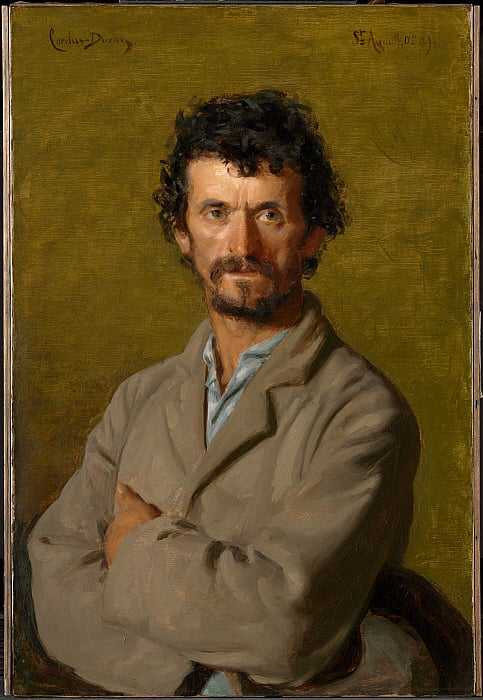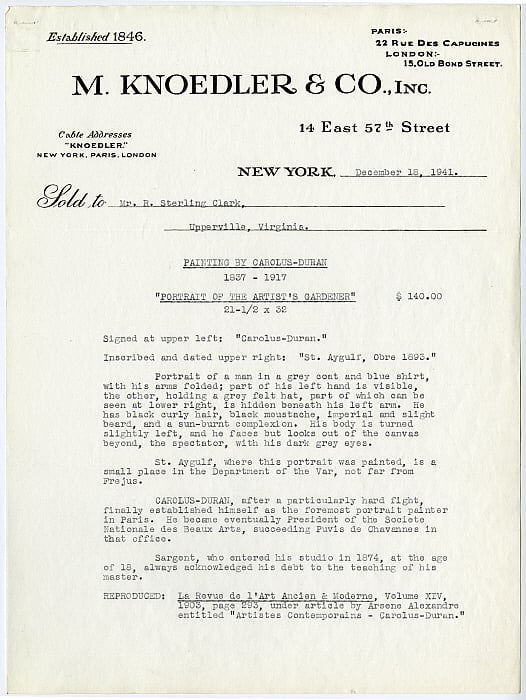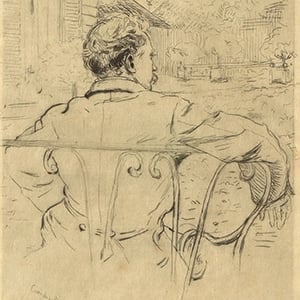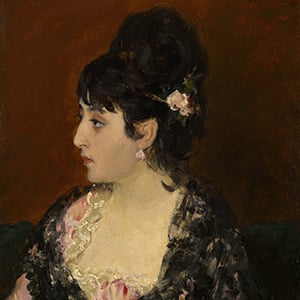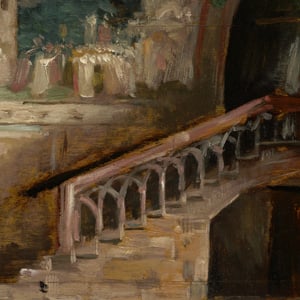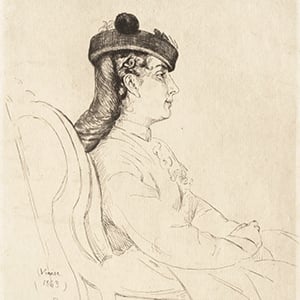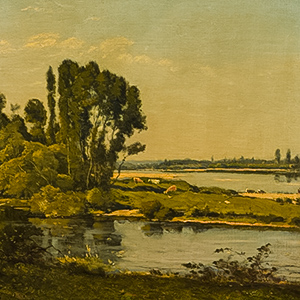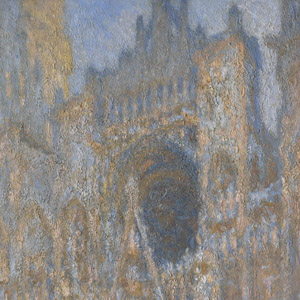Carolus-Duran
French, 1837–1917
The Artist's Gardener
1893
Carolus-Duran acquired a considerable reputation painting portraits of wealthy sitters dressed in sumptuous clothing. This work, in contrast, depicts the artist’s gardener, a ruddy man with unruly hair wearing a wrinkled overcoat. Arms crossed and staring directly out of the picture, he seems impatient to return to work. The earth-toned colors are applied in loose strokes, suggesting the painting was completed quickly. An inscription in the top right corner indicates that the portrait was painted on the French Riviera, where Carolus-Duran owned a villa.
| Medium | oil on canvas |
| Dimensions | 32 1/8 x 21 9/16 in. (81.6 x 54.8 cm) Frame: 41 7/16 x 31 3/4 x 3 in. (105.3 x 80.6 x 7.6 cm) |
| Object Number | 1955.40 |
| Acquisition | Acquired by Sterling and Francine Clark before 1955 |
| Status | Off View |
Image Caption
Carolus-Duran, The Artist's Gardener, 1893, oil on canvas. Clark Art Institute, 1955.40
Select Bibliography
EUROPEAN PAINTINGS CATALOGUE ENTRY
Provenance
William Robinson, Esq., Gravetye Manor, East Grinstead, Sussex (1894–d. 1935, his sale, Christie’s, London, 19 July 1935, no. 70, as Un Terrassier: A gardener employed by the artist, sold to Tooth); [Arthur Tooth, London, from 1935]; Harcourt Johnstone, London (possibly by Dec. 1935–41, sale, Sotheby’s, London, 23 Apr. 1941, no. 112, as Un Terrassier, sold to Spiller);¹ [Knoedler, New York, sold to Clark, 18 Dec. 1941, as Portrait of the Artist’s Gardener]; Robert Sterling Clark (1941–55); Sterling and Francine Clark Art Institute, 1955. 1. The invoice from Knoedler to Clark states that this painting was exhibited at the Russell-Cotes Art Gallery, Bournemouth, from Dec. 1935 to July 1939. An undated label on the reverse of the frame indicates that the painting was being sent from the Russell-Cotes Art Gallery to Harcourt Johnstone, care of Sotheby’s, presumably in order to be sold, suggesting that Johnstone may have lent it to the Art Gallery for the full period. The painting also appeared in a sale at Sotheby’s, London, 12 June 1940, no. 154, where it was reportedly sold to a buyer named Fearon, although it seems subsequently to have been returned to Johnstone.
